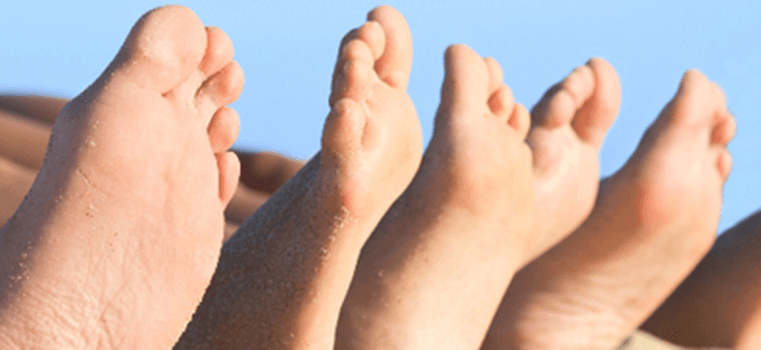Diabetic Foot Education
Woundcare Table of Contents
Diabetic Pathophysiology
How Diabetes Affects the Body – What Every Patient Needs to Know
OC Center for Wound Healing & Foot Care | Dr. Mark Reed
Diabetes is a disease of discipline. Successful management of diabetes requires a daily commitment to blood sugar control, a balanced diet, regular physical activity, and ongoing preventative care. With the right tools and routine care—like wearing diabetic shoes, scheduling regular foot exams, and monitoring for early signs of neuropathy—patients can prevent serious complications, including ulcers, infections, limb loss, and disability.
Uncontrolled diabetes, especially when diabetic neuropathy is ignored, can lead to a Charcot foot deformity, nerve damage, and even irreversible joint destruction. In addition to nerve-related complications, diabetes often causes a variety of skin conditions that require medical attention and ongoing care.
🧬 What Happens to the Cells in Diabetes?
Understanding how diabetes works on a cellular level is crucial for taking charge of your health.
People with diabetes either don’t produce enough insulin or their body becomes resistant to insulin. Insulin is a hormone produced by the pancreas that helps glucose (sugar) enter your cells. Think of insulin as a key that unlocks the cell door so sugar can get inside and be used for energy.
When insulin is low or ineffective:
• Glucose builds up in the bloodstream, instead of entering cells.
• Cells become starved, weak, and dehydrated because sugar draws water out of them.
• Blood sugar levels rise, which can be measured on lab tests like your HbA1c.
This process causes a ripple effect throughout the body—especially the blood vessels, nerves, skin, and organs.
🩸 Blood Vessel Damage in Diabetes
Tiny blood vessels (capillaries) are lined with specialized muscle cells called Tunica Intima. Unlike other cells in your body, these cells can absorb glucose without insulin.
As glucose builds up in the bloodstream:
• Tunica Intima cells absorb excess sugar, swell, and narrow the blood vessels.
• This restricts blood flow and oxygen delivery to tissues.
• Over time, this leads to poor circulation in the legs and feet, as well as damage to the skin, eyes, and kidneys—the classic complications of diabetes.
This narrowing and stiffening of blood vessels is a major reason why patients with diabetes are prone to foot ulcers, vision loss, kidney dysfunction, and slow wound healing.
🧠 Nerve Damage from High Blood Sugar
Nerve tissue is also directly harmed by high blood sugar. In diabetes:
• Nerve cells absorb glucose, which damages their structure.
• Over time, this leads to nerve dysfunction, numbness, tingling, and burning sensations, especially in the feet and hands.
• This condition is called peripheral neuropathy and is one of the most common diabetic complications.
Neuropathy not only causes discomfort but also increases the risk of injuries, infections, and Charcot joint deformity—especially in the feet. Since many patients can’t feel pain normally, they may not notice a problem until it becomes severe.
🏥 Prevention is the Best Medicine
To reduce your risk of serious complications, it’s important to:
• ✅ Monitor your blood glucose levels daily
• ✅ Work with your endocrinologist, podiatrist, and nutritionist regularly
• ✅ Exercise regularly to improve circulation and insulin sensitivity
• ✅ Eat a balanced, low-sugar, nutrient-rich diet
• ✅ Use protective footwear designed for diabetic patients
• ✅ Schedule regular diabetic foot exams
Diabetic Patient Precautions
Protecting Your Feet: Essential Diabetic Foot Care
Diabetes significantly increases the risk of serious foot and ankle complications, including ulcerations, infections, and gangrene. These conditions are the leading causes of hospitalization and amputation in people with diabetes. In fact, diabetic foot infections are the number one reason for diabetes-related hospital stays in the U.S.
Foot ulcers can take months—or even years—to heal. It requires 20 times more energy for the body to heal a wound than to maintain healthy, intact skin. That’s why daily foot care and regular podiatric visits are critical for prevention.
What Causes Diabetic Foot Problems?
1. Diabetic Neuropathy (Nerve Damage)
Nerve damage causes the loss of protective sensations such as pain, temperature, pressure, and vibration. This lack of sensation can result in:
• Undetected cuts, blisters, or pressure injuries
• Toe deformities and collapse of the foot arch
• Excessively dry skin and cracks
• Increased risk of ulcers, infections, and ultimately, gangrene
Without proper treatment, neuropathy can lead to Charcot joint destruction, a serious and disabling condition. But with early detection and proper foot care, most of these issues can be avoided.
2. Poor Circulation (Diabetic Angiopathy)
Reduced blood flow (especially to the feet) impairs wound healing and increases the risk of infection and tissue death (gangrene). In severe cases, this may lead to amputation.
Smoking significantly worsens circulation and should be avoided at all costs. In some cases, medications or vascular surgeries (such as bypass procedures) may be recommended to improve blood flow. Alternative treatments like chelation therapy have been explored but are not widely recognized by mainstream medicine.
Daily Diabetic Foot Care Checklist
✅ 1. Examine Your Feet Every Day
• Use a mirror or ask someone to help if needed.
• Check between toes and under the foot.
• Look for signs of trouble:
• Swelling or redness
• Blisters or pressure sores
• Cuts, scratches, or bleeding
• Maceration or moisture between toes
• Nail issues (thick, ingrown, or infected)
✅ 2. Inspect the Inside of Your Shoes
• Feel for irregular seams or foreign objects (stones, tacks, debris).
• Ensure shoes are clean, soft, and well-fitted.
✅ 3. Wash and Dry Your Feet Daily
• Use lukewarm water (never hot).
• Gently dry, especially between toes.
• Apply a small amount of moisturizer if skin is dry—but avoid between toes.
✅ 4. Choose Proper Footwear and Socks
• Wear breathable shoes with a wide toe box.
• Avoid tight-fitting socks or shoes.
• Break in new shoes slowly—check for redness after 10 minutes, then 30 minutes.
• Rotate shoes daily to relieve pressure points.
• Ask about therapeutic diabetic shoes, often covered by insurance.
• Always inform your shoe salesperson that you have diabetes.
✅ 5. Keep Up with Medical Care
• See your podiatrist regularly.
• Request foot checks at every visit with your primary care provider.
• Report any foot problems right away.
❌ Avoid These Dangerous Habits
• Never walk barefoot—this increases the risk of unnoticed injuries.
• Don’t use heating pads or soak feet in hot water—can cause burns.
• Avoid trimming calluses or corns with sharp tools—this can cause cuts and infections.
• Don’t cut nails into the corners—trim straight across.
• Don’t smoke—it severely reduces blood circulation to the feet.
Remember:
Preventing diabetic foot complications starts with daily diligence, proper footwear, and proactive medical care. If you notice any signs of trouble, contact Dr. Mark Reed at the OC Center for Wound Healing & Foot Care. Early intervention is the best way to avoid ulcers, infections, and potential amputations.
The Ischemic Foot
Understanding Ischemic Foot in Diabetes: Causes, Diagnosis, and Treatment
The term “ischemic foot” refers to a condition where there is inadequate arterial blood flow from the heart to the foot. This insufficient circulation—commonly referred to as arterial insufficiency—prevents the delivery of essential oxygen and nutrients to the tissues, which is vital for cell function and wound healing. Ischemic foot is a serious diabetic foot complication and may be caused by:
• Arterial blockage from cholesterol deposits (atherosclerosis)
• Blood clots (thrombosis)
• Arterial spasm
• Traumatic arterial injury
If left untreated, ischemia can progress to foot ulcers, tissue necrosis, and gangrene, often requiring partial or full foot amputation.
Common Symptoms of Ischemic Foot
Early signs of poor foot circulation include:
• Cold feet
• Purple or red discoloration of the toes
• Muscle cramping after walking short distances (intermittent claudication)
As ischemia advances, more severe symptoms may appear:
• Non-healing wounds or ischemic ulcers
• Rest pain in the feet, especially at night
• Tissue death or gangrene (blackened or dead skin)
Clinical Diagnosis of Ischemic Foot
At the OC Center for Wound Healing & Foot Care, Dr. Mark Reed evaluates ischemic foot through:
• Thorough clinical examination:
• Cool skin temperature
• Shiny or thin skin (skin atrophy)
• Hair loss on the toes and legs
• Absent or weak pedal pulses
• Color changes: white when elevated, red when dependent
• Vascular testing:
• Arterial Doppler studies to assess blood flow and pressure
• Arteriograms (angiograms) using contrast dye and X-rays to locate arterial blockages
Ischemic Foot Treatment Options
Early-Stage Interventions
For mild to moderate ischemia, Dr. Reed may recommend:
• Therapeutic footwear to reduce pressure and friction
• Walking programs to improve circulation
• Prescription medications to support arterial dilation and microvascular health
Innovative Non-Surgical Solutions
For diabetic patients with peripheral arterial disease (PAD) who are not candidates for revascularization surgery, Dr. Reed offers non-operative therapies including:
• Nitroglycerin patches applied over the posterior tibial artery or near the ulcer site
• Enhances local blood flow
• Aids in wound healing and reduces re-ulceration risk
• Proven safety profile with few side effects (e.g., transient headache, occasional dizziness)
These advanced approaches, combined with over 35 years of clinical expertise, have helped prevent limb loss in many patients.
Surgical Treatment
In severe cases, referral to a vascular specialist may be necessary. Surgical options include:
• Arterial bypass surgery
• Endarterectomy (removal of arterial plaque)
While surgical procedures carry risks, timely revascularization can save limbs and restore quality of life.
Trust Your Foot Health to a Specialist
Dr. Mark Reed and the team at OC Center for Wound Healing & Foot Care specialize in preventing diabetic complications like ischemic foot, ulcers, and gangrene. Early detection, regular monitoring, and personalized treatment plans can make all the difference.
DISCLAIMER: MATERIAL ON THIS SITE IS BEING PROVIDED FOR EDUCATIONAL AND INFORMATION PURPOSES AND IS NOT MEANT TO REPLACE THE DIAGNOSIS OR CARE PROVIDED BY YOUR OWN MEDICAL PROFESSIONAL. This information should not be used for diagnosing or treating a health problem or disease or prescribing any medication. Visit a health care professional to proceed with any treatment for a health problem.










